|
|
|
Sort Order |
|
|
|
Items / Page
|
|
|
|
|
|
|
| Srl | Item |
| 1 |
ID:
055191
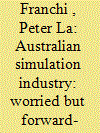

|
|
|
| 2 |
ID:
097070
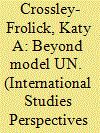

|
|
|
|
|
| Publication |
2010.
|
| Summary/Abstract |
The Model United Nations format is one of the most popular active learning techniques to teach students about the evolving system of global governance and the limits of international organizations. In a world where the UN must cooperate with a variety of actors in the international system to address global challenges, students can benefit from simulations that draw on the intergovernmental Model United Nations format, but move beyond it to explore the complexities of negotiation involving state and nonstate actors. This paper discusses the use and development of a simulation for an upper-level international organization course loosely modeled on the XV International AIDS Conference held in Bangkok, Thailand in July 2004. It explores the value of the simulation, including learning objectives and expectations, student preparation in advance of the simulation, post-simulation debriefing, and an assessment of how the simulation can be modified and made more effective.
|
|
|
|
|
|
|
|
|
|
|
|
|
|
|
|
| 3 |
ID:
130926


|
|
|
|
|
| Publication |
2014.
|
| Summary/Abstract |
This paper examines the use of short writing assignments in undergraduate international relations courses. It gives instructors ideas about thinking beyond traditional research papers and instead focuses on shorter assignments that demand critical thinking skills. The ability to write concisely is useful for students with future careers in government, business, nonprofits, journalism, electoral politics, or academia. By requiring application of theoretical frameworks (perhaps as policy recommendations in a memo), students can see how policymakers employ international relations theories, thereby simulating the work inside the National Security Council or US State Department. This highlights the connections between theory and policy. Short papers can also better showcase role playing and connect with active learning techniques. Research papers of 10 pages or more may not be as useful as shorter assignments that focus students' attention on analyzing an issue, presenting a case study, or writing a policy brief.
|
|
|
|
|
|
|
|
|
|
|
|
|
|
|
|
| 4 |
ID:
087275


|
|
|
|
|
| Publication |
2009.
|
| Summary/Abstract |
Despite a longstanding focus on the systemic distribution of power in the study of international relations, scholarship during the past 20 years increasingly emphasizes the role of domestic politics in foreign-policy-decision making. This simulation enables participants to experience negotiating an international issue-a territorial dispute between two fictitious states, Chinazambia and Boliviafranca-in the context of this "two-level game" between domestic and international environments. The simulation furnishes a vantage point from which students can assess realist, liberal, and alternative theoretical perspectives on international relations as they affect policy making. The simulation is flexible and can be executed under a variety course contexts, as well as time and participation constraints. Additionally, the simulation provides ample opportunity for a number of enriching postsimulation activities.
|
|
|
|
|
|
|
|
|
|
|
|
|
|
|
|
| 5 |
ID:
149012
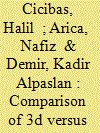

|
|
|
|
|
| Summary/Abstract |
This research compares 3D versus 4D (three spatial dimensions and the time dimension) multi-objective and multi-criteria path-planning for unmanned aerial vehicles in complex dynamic environments. In this study, we empirically analyse the performances of 3D and 4D path planning approaches. Using the empirical data, we show that the 4D approach is superior over the 3D approach especially in complex dynamic environments. The research model consisting of flight objectives and criteria is developed based on interviews with an experienced military UAV pilot and mission planner to establish realism and relevancy in unmanned aerial vehicle flight planning. Furthermore, this study incorporates one of the most comprehensive set of criteria identified during our literature search. The simulation results clearly show that the 4D path planning approach is able to provide solutions in complex dynamic environments in which the 3D approach could not find a solution.
|
|
|
|
|
|
|
|
|
|
|
|
|
|
|
|
| 6 |
ID:
135373
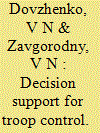

|
|
|
|
|
| Summary/Abstract |
The authors discuss employment of mathematical methods to analyze decisions made to control complex technical organizational systems used for military purpose. They make a strong case for the need to introduces decision support systems as a way to improve the efficiency of troops control in preparation for , and during the conduct of, an engagement (Operation).
|
|
|
|
|
|
|
|
|
|
|
|
|
|
|
|
| 7 |
ID:
136040
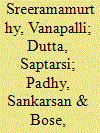

|
|
|
|
|
| Summary/Abstract |
Source localisation is a method to estimate position of a source. In case of acoustic source localisation (ASL), the location of sound source is estimated using acoustic sensors such as a microphone. In case of ASL, time difference of arrival (TDOA) from each pair of microphones is estimated. For any pair of microphones, the surface on which the TDOA is constant is a hyperboloid of two sheets. Then the source location is estimated at the point where all associated hyperboloids most nearly intersect. This concept has been used in our range in finding the point-of-burst of artillery shell using an array of sensors. In this paper, a simulation model has been developed to examine the applicability of acoustic source localisation for determining point-of-burst of artillery shells. The randomness in the model has been incorporated in terms of gustiness of downrange sea wind. The result of the simulation has been validated with trajectory data of projectiles tracked by radar. Finally, an acoustic sensor array-based setup has been developed and used for localising point-of-bursts.
|
|
|
|
|
|
|
|
|
|
|
|
|
|
|
|
| 8 |
ID:
077356
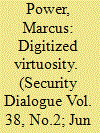

|
|
|
|
|
| Publication |
2007.
|
| Summary/Abstract |
In post-9/11 America, digital war games have increasingly come to provide a space of cyber-deterrence where Americans are able to `play through' the anxieties that attend uncertain times and new configurations of power. This article seeks to examine the increasingly close relationship between the US military and the digital-game industry, along with the geographies of militarism that this has produced. Focusing on the contribution that digital war games make to a culture of perpetual war and in the manufacture of consent for US domestic and foreign policy, the Pentagon's mobilization and deployment of digital games as an attempt to create a modern version of the noble war fantasy is critically examined. With particular reference to America's Army, the official US Army game, the article seeks to examine the influence of digital war games in the militarization of popular culture and in shaping popular understandings of geopolitics
|
|
|
|
|
|
|
|
|
|
|
|
|
|
|
|
| 9 |
ID:
095641
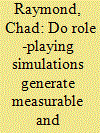

|
|
|
|
|
| Publication |
2010.
|
| Summary/Abstract |
Role-playing simulations are frequently claimed to be effective pedagogical tools in the teaching of international relations (IR); however, there is a surprising lack of empirical evidence on their classroom utility. The assessment of simulations remains mostly anecdotal, and some recent research has found little to no statistically significant improvements in quantitative measures of academic performance among students who participated in them [for example, International Studies Perspectives (2006), vol. 7, pp. 395; International Studies Perspectives (2008), vol. 9, pp. 75-89]. Scant research has been conducted on how role-playing simulations might affect students' perceptions of the instructor's teaching. This paper investigates whether a simulation had statistically significant effect on students' exam scores in an IR course or on student teaching evaluation scores.
|
|
|
|
|
|
|
|
|
|
|
|
|
|
|
|
| 10 |
ID:
094901
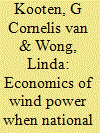

|
|
|
|
|
| Publication |
2010.
|
| Summary/Abstract |
Power interruptions are a typical characteristic of national grids in developing countries. Manufacturing, processing, refrigeration and other facilities that require a dependable supply of power, and might be considered a small grid within the larger national grid, employ diesel generators for backup. In this study, we develop a stochastic simulation model of a very small grid connected to an unreliable national grid to show that the introduction of wind-generated power can, despite its intermittency, reduce costs significantly. For a small grid with a peak load of 2.85 MW and diesel generating capacity of 3.75 MW provided by two diesel generators, the savings from using wind energy (based on wind data for Mekelle, Ethiopia) can amount to millions of dollars for a typical July month, or some 5.5-17.5% of total electricity costs. While wind power can lead to significant savings, the variability of wind prevents elimination of the smaller of two diesel units, although this peaking unit operates less frequently than in the absence of wind power.
|
|
|
|
|
|
|
|
|
|
|
|
|
|
|
|
| 11 |
ID:
074007
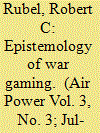

|
|
|
| 12 |
ID:
152301
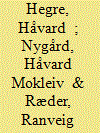

|
|
|
|
|
| Summary/Abstract |
Several studies show that internal armed conflict breeds conflict by exacerbating conditions that increase the chances of war breaking out again. Empirically, this ‘conflict trap’ works through four pathways: conflicts increase the likelihood of continuation, recurrence, escalation, and diffusion of conflict. Past empirical studies have underestimated the scope and intensity of the conflict trap since they consider the impact of conflict only through one of these pathways and rarely across sufficiently long time periods. This article shows that simulation and forecasting techniques are useful and indeed necessary to quantify the total, aggregated effect of the conflict trap, over long time periods and across countries. We develop a country-year statistical model that allows estimating the probability of no conflict, minor conflict, and major conflict, and the probabilities of transition between these states. A set of variables denoting the immediate and more distant conflict history of the country are used as endogenous predictors in the simulated forecasts. Another set of variables shown to be robustly associated with armed conflict are treated as exogenous predictors. We show that the conflict trap is even more severe than earlier studies have indicated. For instance, if a large low-income country with no previous conflicts is simulated to have two to three years of conflict over the 2015–18 period, we find that it will have nine more years of conflict over the 2019–40 period than if peace holds up to 2018. Conversely, if a large low-income country that has had major conflict with more than 1,000 battle-related deaths in several of the past ten years succeeds in containing violence to minor conflict over the 2015–18 period, we find that it will experience five fewer years of conflict in the subsequent 20 years than if violence continues unabated.
|
|
|
|
|
|
|
|
|
|
|
|
|
|
|
|
| 13 |
ID:
145846
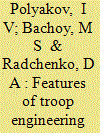

|
|
|
|
|
| Summary/Abstract |
This article considers issues of providing engineering support to a motorized infantry brigade actions in the context of seasonal changes in climatic conditions of the Arctic Zone.
|
|
|
|
|
|
|
|
|
|
|
|
|
|
|
|
| 14 |
ID:
172165
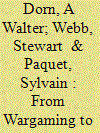

|
|
|
|
|
| Summary/Abstract |
Militaries around the world have benefited from computerized games. Many recruits have been attracted to the military through military-style video games. After recruitment, games and simulations provide an important means of soldier training, including before actual deployments. However, electronic games are lacking for UN peace operations. The multidimensionality of peacekeeping has yet to be simulated in serious games to complement the many games that too often depict a binary battlefield of blue-team versus red-team (or, often in public games, good versus evil). Not only could soldiers benefit from nuanced and ambitious peace-related games, so too could civilian peacekeepers, and the public at large. Peacekeeping gaming should not be merely at the tactical level; the operational and strategic levels can be gamed as well. The decision-making in future peacekeeping simulations could help instruct conflict-resolution and critical thinking skills. The paper posits that such digital games could be an important tool for current and future peacekeepers, both military and civilian. Commercial games could also help educate the public on UN peacekeeping. The paper suggests that the United Nations partner with some member states and perhaps the video game industry to provide in-depth training simulations that mirror the challenges and complexities of modern peace operations.
|
|
|
|
|
|
|
|
|
|
|
|
|
|
|
|
| 15 |
ID:
098204
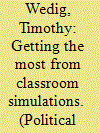

|
|
|
|
|
| Publication |
2010.
|
| Summary/Abstract |
Classroom simulations can make a significant contribution to learning outcomes in political science courses, provided that they are firmly linked to course content and learning objectives. This article offers a step-by-step decision framework for instructors seeking to use simulations as a core component of their courses, including selection of an exercise, pre-simulation preparation, instructor role during a simulation, and techniques for debriefing after the exercise. Options such as online and face-to-face, synchronous and asynchronous, distributed and single classroom, and individual and team formats are compared, with a focus on their associated learning outcomes.
|
|
|
|
|
|
|
|
|
|
|
|
|
|
|
|
| 16 |
ID:
186486
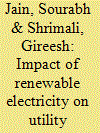

|
|
|
|
|
| Summary/Abstract |
Declining levelized costs of renewable energy have become a driving force in supporting renewable energy in India; the levelized cost of wind and solar has plummeted to between 3.3¢/kWh and 4¢/kWh. However, limited research exists on the impacts of renewables on the finances of Indian distribution utilities. The present study examines the financial impact of incremental penetration of the hydro, solar, and wind alternative in the generation mix of the distribution company of the Indian state of Madhya Pradesh. Using real-time 15-min interval data and a merit-order-dispatch model, the study quantifies the merit-order-effect and assess the potential savings from renewables. The results indicate that depending upon the penetration level under demand growth cases, renewable integration could lower the power purchase cost of Indian utilities by up to 11%. Wind produces most savings between 0.11¢/kWh and 2.71¢/kWh followed by solar −0.17¢/kWh and 2.56¢/kWh and hydro −0.32¢/kWh and 2.05¢/kWh. The savings will increase with rising electricity demand and plummeting costs of renewables. Integrating moderate levels of renewables no longer presents economic-environment trade-offs and can simultaneously meet multiple policy goals of energy affordability and environmental sustainability.
|
|
|
|
|
|
|
|
|
|
|
|
|
|
|
|
| 17 |
ID:
096634


|
|
|
|
|
| Publication |
2010.
|
| Summary/Abstract |
Dynamic simulation is used with defined domestic building variants to investigate internal temperatures of UK dwellings. Factors such as a warming climate and varying internal heat gains are estimated to examine whether UK domestic buildings are likely to be prone to overheating in the future, and therefore require mechanical air conditioning. The study suggests that the ability, or inability, of the occupant to adapt to bedroom temperature is paramount in the understanding of the conditions for overheating. While this is difficult to quantify (and a range of comfort temperatures are proposed), the effect of changing the building construction and geographical location can result in significantly different thermal conditions. As might be expected, the problem appears most noticeable for buildings in the south of the UK and with lightweight constructions. Even with a window-opening schedule applied to such a scenario, the average internal temperature is simulated as being over 28 °C for almost 12% of the year. A different metric, defined as "cooling nights", suggests that there might be a cooling problem in bedroom areas for approximately a third of the year. In the North of the UK, and also for solid wall dwellings, this problem diminishes significantly.
|
|
|
|
|
|
|
|
|
|
|
|
|
|
|
|
| 18 |
ID:
070232
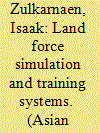

|
|
|
| 19 |
ID:
090943
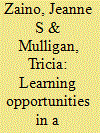

|
|
|
|
|
| Publication |
2009.
|
| Summary/Abstract |
When designed and executed properly, role-playing simulations go a long way to enhance student learning. Typically, however, simulations are divided along subfields. Most exercises, whether based on real or fictitious events, either place students in various roles within a country or have them represent the international interests of one country among others. In an effort to bridge this divide and answer recent calls to internationalize the curriculum, we have designed and implemented a department-wide crisis simulation. The article demonstrates that students engaged in a large-scale, department-wide simulation gain a greater appreciation and understanding of political processes and variables including negotiation, the opportunities and constraints of institutional design, identity, and strategic thinking.
|
|
|
|
|
|
|
|
|
|
|
|
|
|
|
|
| 20 |
ID:
099358
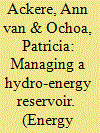

|
|
|
|
|
| Publication |
2010.
|
| Summary/Abstract |
Liberalisation and privatisation have increased the need to gain more understanding into the management of hydro storage (HS) plants. We analyse what types of reservoir management policies enable an owner or a public authority to achieve their respective objectives. By "policy" we understand simple, easily applicable decision rules, which enable a decision maker to decide when and how much to produce based on currently available information. We use a stylised deterministic simulation model of a hydro-power producer (HP) who behaves strategically. We study a non-liberalised market, where the authorities aim to minimise the total electricity cost for customers and a liberalised market where the HP attempts to maximise his contribution. This enables us to evaluate the impact of the liberalisation of HS production decisions on production volumes and electricity prices. We conclude that imposing rigid policies with the aim of limiting the potential for strategic behaviour can create incentives to produce only at very high prices throughout the year. This can lead to very high total costs, especially when the producer has most flexibility (large reservoirs combined with large turbine capacity). More surprisingly, we observe lower total production in a non-liberalised market.
|
|
|
|
|
|
|
|
|
|
|
|
|
|
|
|
|
|
|
|
|